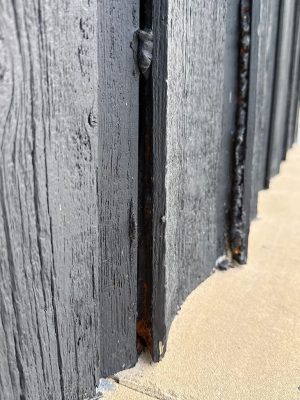IL License Number: 104.017181
IL License Number: 104.017181

Old wood siding can add charm to a home—but charm often comes at the cost of constant upkeep, weathering from the Northwest Chicago climate, and expensive repainting.
Wood siding demands a lot. It needs repainting or staining every 5–7 years, is vulnerable to rot and insects, and suffers quickly in wet climates. If any of this sounds familiar, vinyl might be a welcome relief. Once installed, vinyl siding requires nothing more than a simple rinse with a hose now and then.
Even when maintained, old wood siding can begin to cup, crack, or fade over time. Its seams might gap, paint can blister, and nails may rust through. These aesthetic signs are more than cosmetic—they often point to underlying moisture issues or failing insulation.

Modern vinyl has come a long way. Gone are the plasticky panels of decades past. Today’s high-end vinyl options mimic real wood grain, come in dozens of fade-resistant colors, and feature improved durability and insulation.
Here are some of the major advantages:
Vinyl siding installation is typically 30–60% less expensive than premium wood siding. And unlike wood, vinyl doesn’t need ongoing paint jobs—saving thousands over the life of your home.
Once the prep work was complete, we installed premium vinyl siding with a natural-looking wood grain texture. The homeowner chose a neutral color that would stay timeless but modern—and thanks to fade-resistant technology, it’ll hold its tone for decades.
This project is a perfect example of how removing aging wood siding and upgrading to vinyl isn’t just about looks—it’s a smart investment in performance, longevity, and resale value. To read more about this Inverness home transformation, visit our case study.
Yes, You Can—But Should You?
Installing vinyl siding over wood is possible, but it’s not always ideal. While this method can save on labor, it comes with trade-offs:
In most cases—especially with older siding—we recommend a full tear-off. This gives you the opportunity to inspect your sheathing, improve insulation, and install a proper moisture barrier. Yes, it’s more work up front—but the long-term performance and peace of mind are worth it. Click here to learn more about what’s under your siding.
For the recent Holda Construction Roofing & Siding project in Inverness, we used Mastic Quest: a top-tier option for homeowners seeking both durability and style. It features a thickness of .046 inches, offering excellent strength and rigidity. The homeowners selected a double 4-inch straight profile, which provided a clean, timeless aesthetic. The color—English Wedgewood, a rich and modern blue—dramatically elevated curb appeal while maintaining a classic look. Coordinated J-channel and vinyl corners ensured the trim matched perfectly for a polished, professional finish. Mastic also offers a wide color palette and strong weather resistance, making it ideal for Midwestern climates.
If you’re considering making this switch, talk to a professional contractor who can walk you through product options, installation methods, and pricing. This isn’t a one-size-fits-all job—your home deserves a tailored solution.
Looking for more information or a broader perspective? For a comprehensive guide comparing pros and cons of different types of sidings, visit Holda’s siding guide.
If you’re exploring this transition, we’d love to provide you with tips to make the project seamless and help guide you through your options. Working together, we’ll surely design a solution that’s right for your home and budget.
With over twenty years in business and hundreds of satisfied customers, we know what it takes to properly maintain a home. Join the family of satisfied homeowners who trust Holda Construction Roofing and Siding for all their roofing and siding needs.
We look forward to working with you!
Address
317 W Colfax St. Suite 102
Palatine, IL 60067